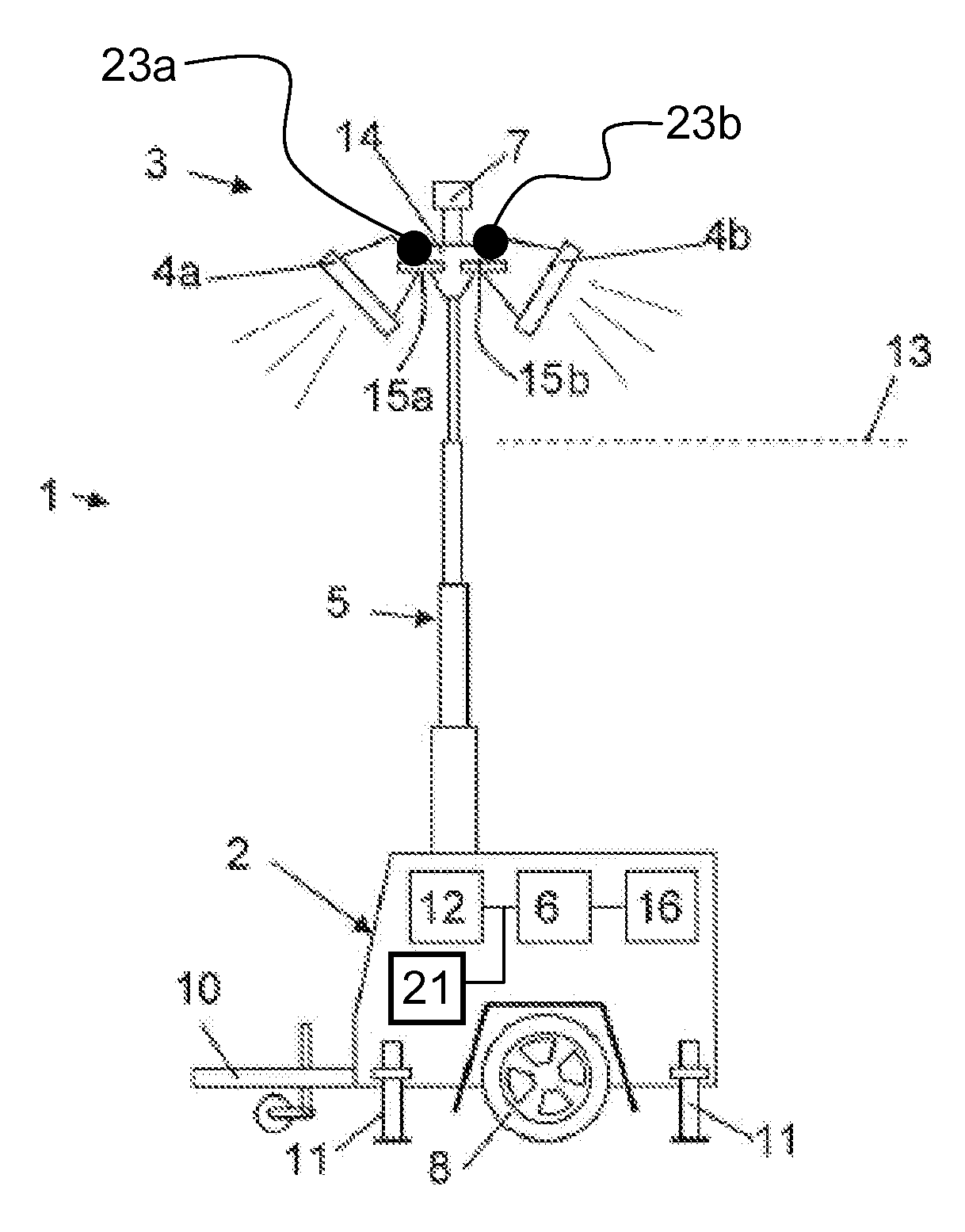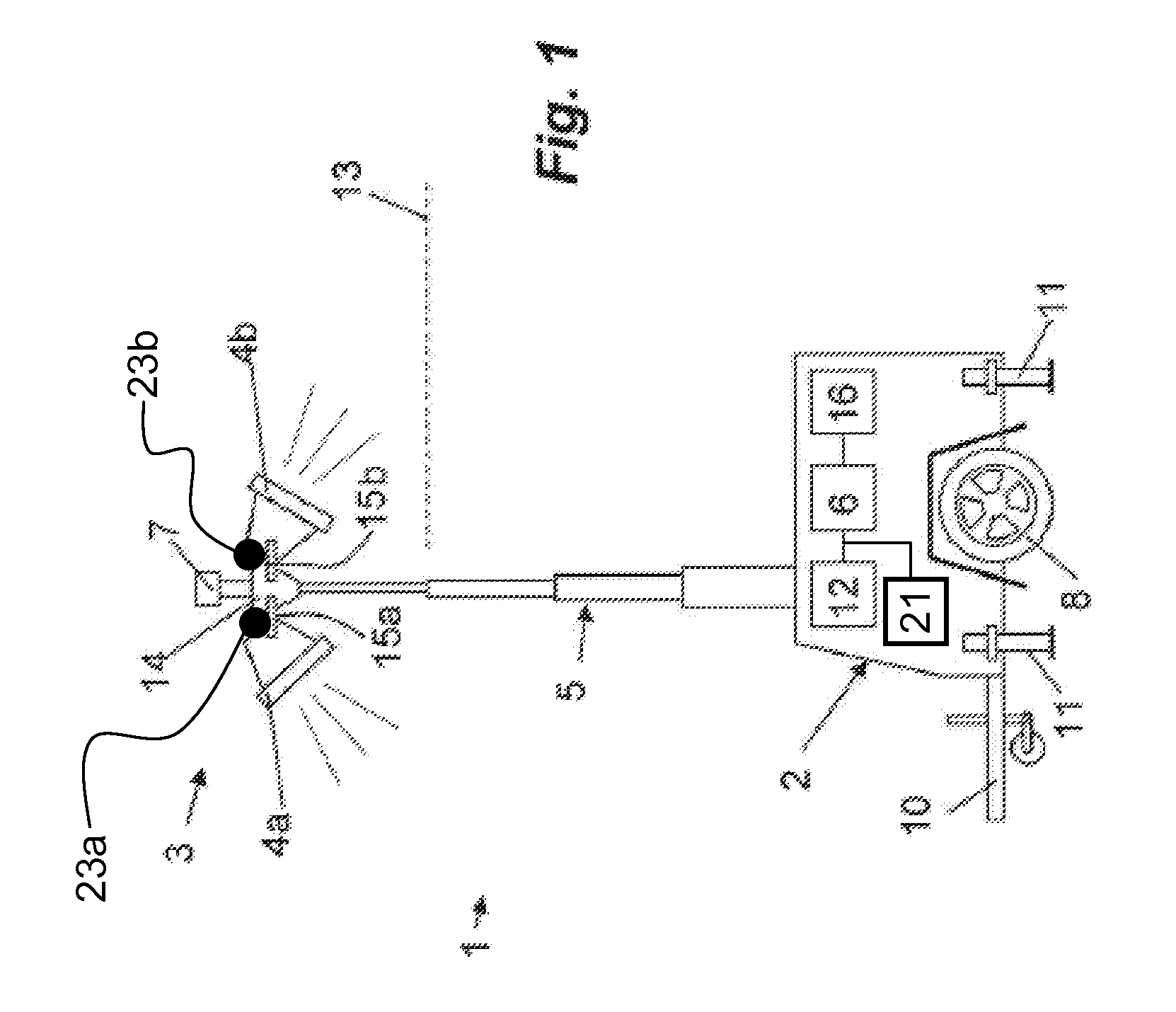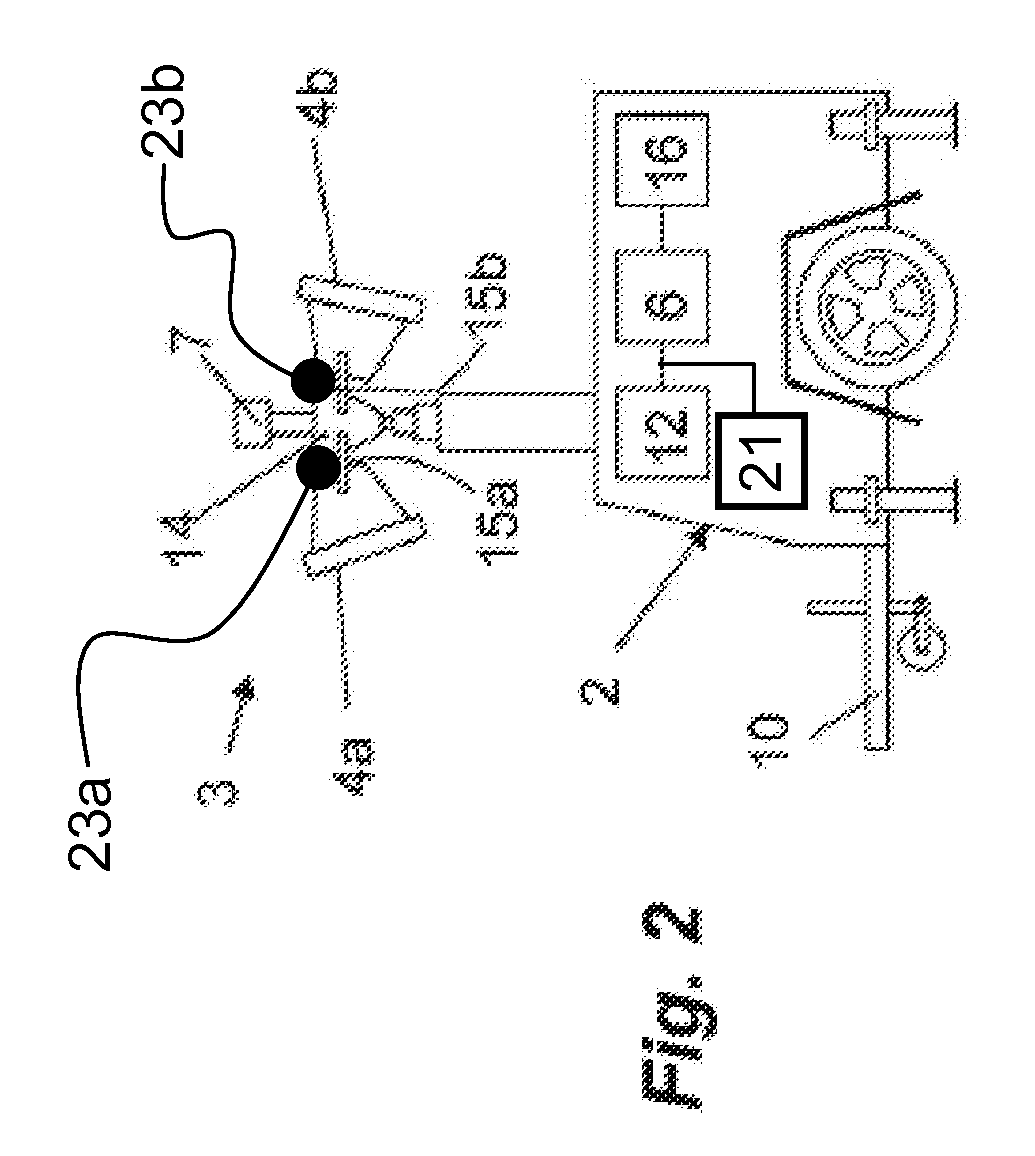Mobile light tower
a technology of mobile light tower and extendable mast, which is applied in the field of mobile light tower, can solve the problems of lowering the extendable mast, and achieve the effects of less leverage, safe operation in higher wind speeds, and lower the extendable mas
- Summary
- Abstract
- Description
- Claims
- Application Information
AI Technical Summary
Benefits of technology
Problems solved by technology
Method used
Image
Examples
Embodiment Construction
[0024]FIG. 1 shows an embodiment of a mobile light tower 1 for use on building sites, roadworks, or car parks, for examples. The mobile light tower is set up to provide illumination of an area so that a workforce can operate at night or car park users can find their cars more easily. It will be appreciated that these are only examples and the mobile light tower has many other uses.
[0025]The mobile light tower 1 may comprise a base unit 2 and a light rig 3 including at least one light, for example, lights 4a and 4b. In some embodiments, more or fewer than two lights may be provided. The light rig 3 is connected to the base unit 2 by an extendable mast 5. The base unit 2 includes a power source 21 comprising, for example, a diesel powered generator for generating electricity for powering the lights 4a, 4b. The extendable mast 5 is adapted to move between a retracted position (shown in FIG. 2) and an extended position (shown in FIG. 1). The mobile light tower 1 includes a controller 6 ...
PUM
 Login to View More
Login to View More Abstract
Description
Claims
Application Information
 Login to View More
Login to View More - R&D
- Intellectual Property
- Life Sciences
- Materials
- Tech Scout
- Unparalleled Data Quality
- Higher Quality Content
- 60% Fewer Hallucinations
Browse by: Latest US Patents, China's latest patents, Technical Efficacy Thesaurus, Application Domain, Technology Topic, Popular Technical Reports.
© 2025 PatSnap. All rights reserved.Legal|Privacy policy|Modern Slavery Act Transparency Statement|Sitemap|About US| Contact US: help@patsnap.com



